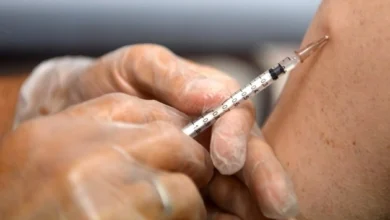WHO apologized after confusing information about infections by people without symptoms

The World Health Organization chief has apologized after confusing communication earlier this week about the contagiousness of corona patients who have no symptoms. “Covid-19 is a new virus, and the WHO is learning every day,” said Director-General Tedros Adhanom Ghebreyesus.
During a news conference at headquarters in Geneva on Wednesday evening, the WHO chief said that the health agency “could always do better”.
Misunderstanding
The World Health Organization received a lot of criticism this week after one of its top scientists said Monday that the spread of the new coronavirus by infected patients who do not develop symptoms is “very rare.”
The scientific world stood on its back legs because research contradicts that. Moreover, the ‘news’ also started to spread on social media, and some began to argue cheerfully that oral masks and distance are not so important after all.
Less than 24 hours later, WHO epidemiologist Maria Van Kerkhove returned to the statement in a special press conference. “It was a misunderstanding,” she said. “We don’t actually have the answer yet.”
She added that she had responded to a question from a journalist during a press release and that she was in no way “propagating a policy or anything like that by the WHO.”
By “very rare,” she did not mean in her own words that asymptomatic transmission hardly occurs. “We know that some people pass on the virus without symptoms.”
She previously referred to the fact that there is “only a small subset of studies” talking about that issue. At the same time, WHO also admitted that some models state that as many as 41 percents of infections can be associated with asymptomatic cases. But no one who actually knows enough about it at the moment.
What is Asymptomatic?
An asymptomatic person is someone who is infected with Covid-19 but never develops symptoms. This is not the same as a pre-symptomatic patient who does develop symptoms later in the infection. Studies have shown that infected people can spread the lung virus even before they have symptoms.
Infected people who never develop symptoms could also infect others, according to studies. But it is still a big unknown. About a third of corona infections are asymptomatic, according to the U.S. Center for Disease Control, and some models go up to more than 40 percent.
In any case, research suggests that about half of all infections occur through asymptomatic or pre-symptomatic patients.
“Much that we don’t know”
In her reaction to the commotion, Van Kerkhove, therefore, stated that there is “still much that we do not know”.
“In the majority of infections we know about, people with symptoms transmit the virus to other people through infected drops. Of course, there are also a number of people who do not develop symptoms. But we don’t know exactly how many people it is.”
“We do know that some people who are asymptomatic can spread the virus. What we need to understand better is how many people in the population have no symptoms, and how many of these individuals infect others.” An additional difficulty is that what at first appears to be asymptomatic cases often turn out to be cases in which the disease is rather mild.
“The research into asymptomatic spread continues,” said WHO CEO Tedros Adhanom Ghebreyesus. “We see that more and more research is being done. Here’s what we do know for sure: Finding, isolating and testing people with symptoms, and tracing and isolating their contacts, is a very important way to stop further spread.” Keeping distance and hand hygiene are also very important.
Mouth masks
It is not the first time that WHO has withdrawn statements or advice. Just last week, the organization amended its guideline about wearing a mouth mask after new studies. She now advises everyone to wear a fabric mask if there is a risk of infection, and if you cannot keep a sufficient distance. Previously, WHO had always maintained that wearing respirators in public is of little use. “Wearing a mouth mask reduces the risk of asymptomatic and pre-symptomatic infection,” Van Kerkhove said Tuesday.
At the end of May, WHO suspended “clinical” trials of hydroxychloroquine “temporarily” as a precaution, after a study found that the use of chloroquine or its derivatives, such as hydroxychloroquine, against Covid-19 is ineffective or even harmful.
This new episode about asymptomatic infections mainly reveals how much uncertainty remains about the feared new lung virus and how difficult it is for health authorities to communicate about this uncertainty, especially in view of the great demand for new insights from citizens and the anger or confusion that can accompany it.
“Communicating complex science about a new virus in real-time is not always easy, but we see it as part of our duty to the world,” Tedros said. “We welcome constructive debate, and that’s just how science makes progress. WHO advises will continue to evolve as new information becomes available.”



![How do you best greet each other in corona times? [Photos]](https://afrinik.com/wp-content/uploads/2020/03/gesture-772977_1280-390x220.jpg)
![Deserted cities in the world due to Coronavirus [Pictures]](https://afrinik.com/wp-content/uploads/2020/03/argentina-390x220.jpg)